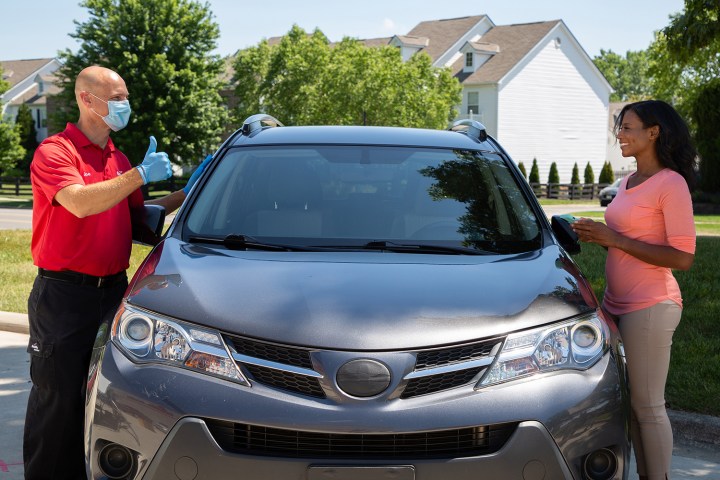
It’s important to keep safe on the roads and that’s precisely why advanced safety systems are increasingly common in newer vehicles. These vehicles offer features that keep you safe on the road with what feels like an extra pair of eyes looking out for any dangers. These safety features can include automatic emergency braking, forward collision warning, lane keep assist, and even the ability to detect when a pedestrian has stepped out in front of your vehicle. They’re an effective way of reducing the risk of collisions and injuries thereby keeping your family and everyone around you safer.
Such advanced safety systems typically work via cameras mounted on or just behind the windshield of your vehicle or integrated into vehicle components such as your car’s bumpers. However, for these systems to work accurately, vehicle manufacturers require these cameras to be recalibrated any time your windshield is replaced. At Safelite, windshield camera recalibration can often be done during the same appointment as the windshield replacement, meaning less hassle and less time spent getting your vehicle repaired.
Why do I need recalibration?

If your forward facing camera is not recalibrated after a windshield replacement, it could interfere with the ability of your vehicle’s advanced safety systems to accurately spot potential problems or even avoid collisions. That defeats the purpose of advanced safety systems. According to the 2019 CCC Crash Report, advanced safety systems are expected to achieve a 20% reduction in vehicle crashes.
Safelite technicians are highly experienced when it comes to the recalibration process and can complete the specific recalibration required by your vehicle manufacturer. When you book a replacement appointment online, you’ll be alerted if your vehicle needs recalibration.
Expertise is essential with different types of recalibration
There are different types of recalibration, which depend on the vehicle make and model, and are determined by the vehicle manufacturer. Recalibration service requires specialized tools, equipment, and skilled precision. Sometimes recalibration can be performed at the customer’s location, but other vehicles may need to be brought to a Safelite shop.
Safelite will know exactly what your vehicle requires when you make an appointment.
What is Safelite?
Safelite is America’s largest vehicle glass specialist. Starting out as a single store based in Wichita, Kansas in 1947, the company now services millions of customers every year across all 50 states. More than 97% of U.S. drivers can access Safelite’s services, with the company offering the best and simplest way to replace your broken windshield or other vehicle glass.
All you need to do is head over to safelite.com. Safelite has thousands of its MobileGlassShopsTM and repair facilities across the country so you can choose the location that’s most convenient for you.
Why Safelite is a great choice for recalibrating your advanced safety systems
Safelite offers windshield replacement and recalibration in a single appointment, saving you time and ensuring vehicle safety. With a nationwide lifetime warranty on auto glass replacements and a guarantee on recalibrations, you can trust Safelite. If you’re looking for a repair or replacement of your vehicle’s windshield, simply head over to the Safelite website and schedule an appointment online today.
What other services does Safelite provide?
Besides being able to replace or repair your windshield and perform advanced safety systems recalibration, Safelite also offers side window and rear glass replacement services, top-quality windshield wipers and glass cleaners, and Safelite AutoGlass Rain Defense, a technician-applied water-repellant treatment.




